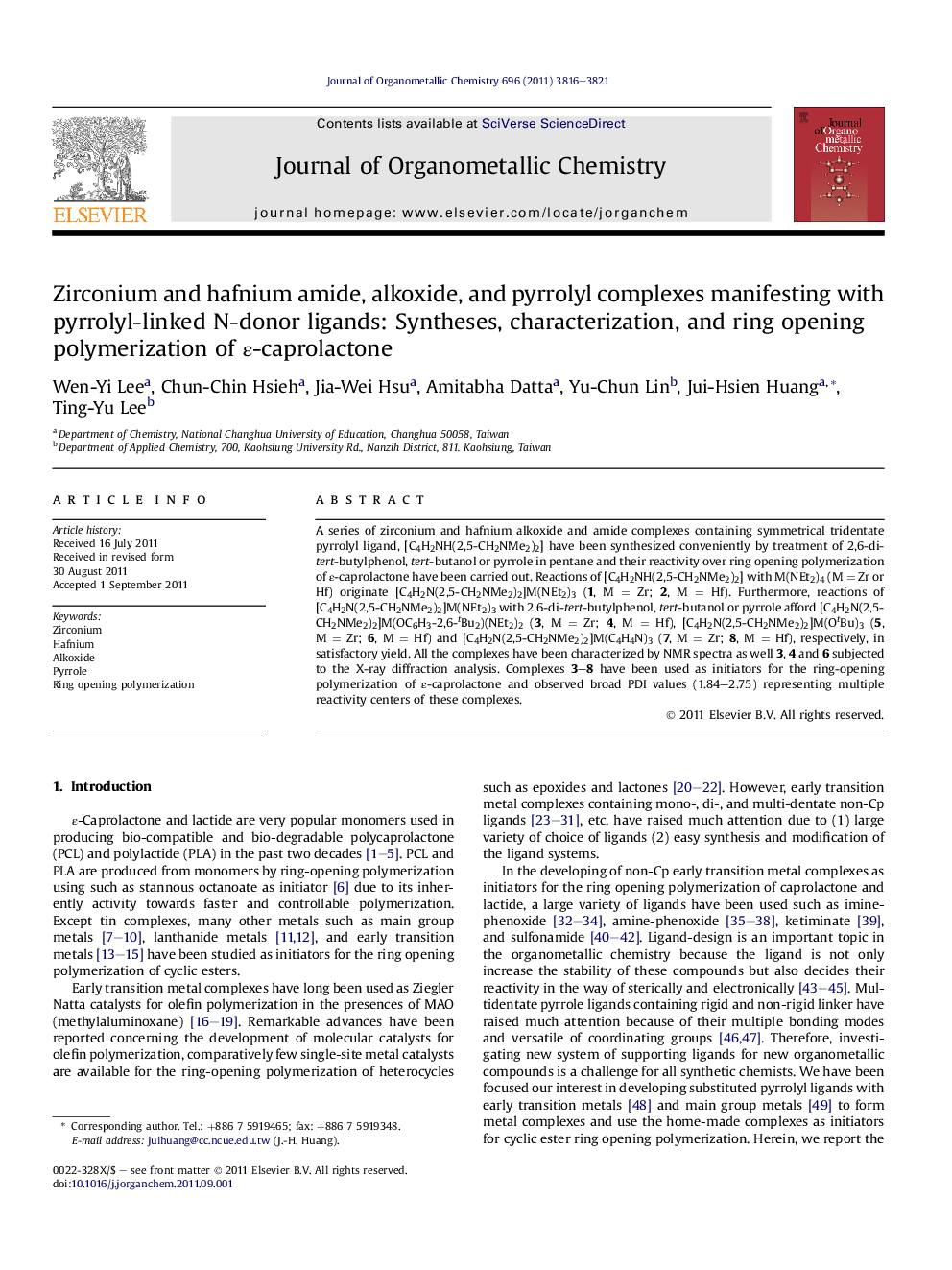| Article ID | Journal | Published Year | Pages | File Type |
|---|---|---|---|---|
| 1325124 | Journal of Organometallic Chemistry | 2011 | 6 Pages |
A series of zirconium and hafnium alkoxide and amide complexes containing symmetrical tridentate pyrrolyl ligand, [C4H2NH(2,5-CH2NMe2)2] have been synthesized conveniently by treatment of 2,6-di-tert-butylphenol, tert-butanol or pyrrole in pentane and their reactivity over ring opening polymerization of ε-caprolactone have been carried out. Reactions of [C4H2NH(2,5-CH2NMe2)2] with M(NEt2)4 (M = Zr or Hf) originate [C4H2N(2,5-CH2NMe2)2]M(NEt2)3 (1, M = Zr; 2, M = Hf). Furthermore, reactions of [C4H2N(2,5-CH2NMe2)2]M(NEt2)3 with 2,6-di-tert-butylphenol, tert-butanol or pyrrole afford [C4H2N(2,5-CH2NMe2)2]M(OC6H3-2,6-tBu2)(NEt2)2 (3, M = Zr; 4, M = Hf), [C4H2N(2,5-CH2NMe2)2]M(OtBu)3 (5, M = Zr; 6, M = Hf) and [C4H2N(2,5-CH2NMe2)2]M(C4H4N)3 (7, M = Zr; 8, M = Hf), respectively, in satisfactory yield. All the complexes have been characterized by NMR spectra as well 3, 4 and 6 subjected to the X-ray diffraction analysis. Complexes 3–8 have been used as initiators for the ring-opening polymerization of ε-caprolactone and observed broad PDI values (1.84–2.75) representing multiple reactivity centers of these complexes.
Graphical abstractA series of zirconium and hafnium alkoxide and amide complexes containing symmetrical tridentate pyrrolyl ligand, [C4H2NH(2,5-CH2NMe2)2] have been synthesized and their activity toward the ring opening polymerization of ε-caprolactone have been carried out.Figure optionsDownload full-size imageDownload as PowerPoint slideHighlights► Tridentate symmetrical tridentate pyrrolyl ligand, [C4H2NH(2,5-CH2NMe2)2] was used. ► Zirconium and hafnium alkoxide and amide complexes were synthesized. ► Ring opening polymerization of ε-caprolactone was studied.
